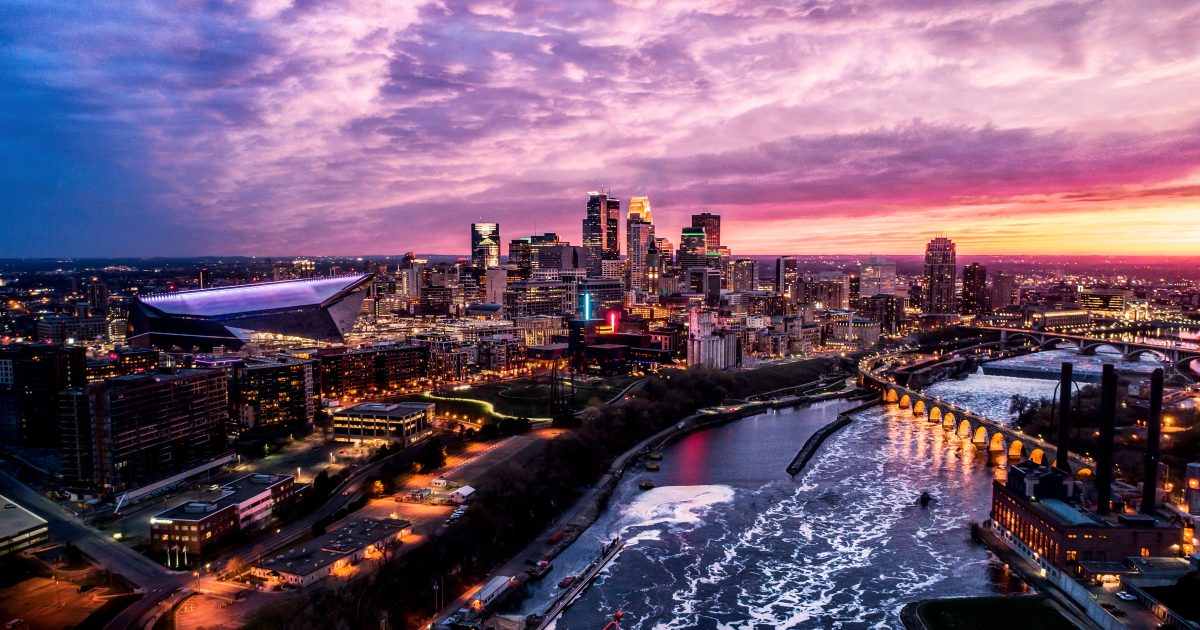The Minneapolis Park and Recreation Board was created by an act of the Minnesota State Legislature and a vote of Minneapolis residents in 1883. Charles M. Loring was elected the first president of the board. Loring convinced landowners to donate property around Lake Calhoun, Lake Harriet and Lake of the Isles, as well as on Minnehaha Creek.
Loring hired Horace Cleveland to create the original plan for Minneapolis parks in 1883, Cleveland’s finest landscape architecture, preserving geographical landmarks and linking them with boulevards and parkways. Loring and Cleveland were instrumental in creating Minnehaha Park, with its falls as a centerpiece.
Theodore Wirth was superintendent from 1906 to 1936 and oversaw the expansion of Minneapolis parks from 1,810 to 5,241 acres (732 to 2,121 ha). Wirth was an advocate of active recreation in all city parks and put up signs saying “Please Walk on the Grass.” Wirth also promoted neighborhood parks for the whole city, his plans called for a playground within one-quarter mile of every child and a recreation center within one-half mile of all residents. In 2017, 97% of all residents live within a 10-minute walk of a park.
The park system’s 6,084 acres (24.62 km2) make up 15% of the total area of Minneapolis, one of the highest ratios in the country.
The city’s Chain of Lakes, consisting of seven lakes and Minnehaha Creek, is connected by bike, running, and walking paths and used for swimming, fishing, picnics, boating, and ice skating. A parkway for cars, a bikeway for riders, and a walkway for pedestrians runs parallel along the 52 miles (84 km) route of the Grand Rounds National Scenic Byway. Parks are also connected through the Mississippi National River and Recreation Area regional parks and visitor centers.
The country’s oldest public wildflower garden, the Eloise Butler Wildflower Garden and Bird Sanctuary, is located within Theodore Wirth Park. Wirth Park extends into Golden Valley and is almost 90% the size of Central Park in New York City. Site of the 53-foot (16 m) Minnehaha Falls, Minnehaha Park is one of the city’s oldest and most popular parks, receiving over 850,000 visitors each year. Henry Wadsworth Longfellow named Hiawatha’s wife Minnehaha for the Minneapolis waterfall in The Song of Hiawatha, a bestselling and often-parodied 19th century poem.
The first natural swimming pool in the United States opened in Webber Park in 2015. The outdoor pool does not use any chemicals, rather it uses natural filters and plants in several container ponds to keep the water clean in the Twin Cities.
The Minneapolis Park and Recreation Board is an independently elected, semi-autonomous park district responsible for governing, maintaining, and developing the Minneapolis park system. The jurisdiction of the MPRB is contiguous with the City of Minneapolis borders, although it owns and operates four golf courses outside the city limits.
Minneapolis voters elect nine commissioners every four years: one from each of the six park districts, and three that serve at-large. The district and at-large members are elected using ranked choice voting. The Board of Commissioners appoints the Superintendent and sets policy for the MPRB.







